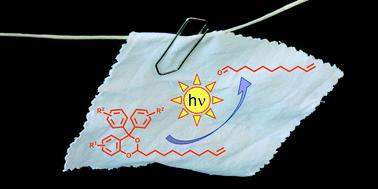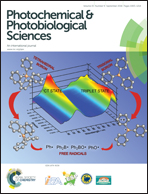Photolabile acetals as profragrances: the effect of structural modifications on the light-induced release of volatile aldehydes on cotton†
Abstract
Because volatile compounds evaporate from surfaces that are usually exposed to daylight, photoresponsive delivery systems are particularly suitable to control their release. In the present study, we investigated 4,4-diphenyl-4H-benzo[d][1,3]dioxins as profragrances for the light-induced delivery of aldehydes in functional perfumery. The efficiency of fragrance release was investigated on cotton after direct and indirect surface deposition from a fabric softening formulation as a function of the substitution pattern of the profragrance structure. Dynamic headspace analysis above the cotton surface demonstrated that the structure of the profragrance had a much larger effect on the fragrance release than did the amount of deposition on the target surface. Although some trends observed for the photolysis in solution also applied to the reaction on cotton, it is not generally possible to predict the photochemical behaviour of structurally different precursors on surfaces from their solution properties. The fact that the present system performed on a dry surface makes it an interesting light-triggered delivery vehicle for other classes of bioactive volatile compounds, such as pheromones or agrochemicals.


 Please wait while we load your content...
Please wait while we load your content...